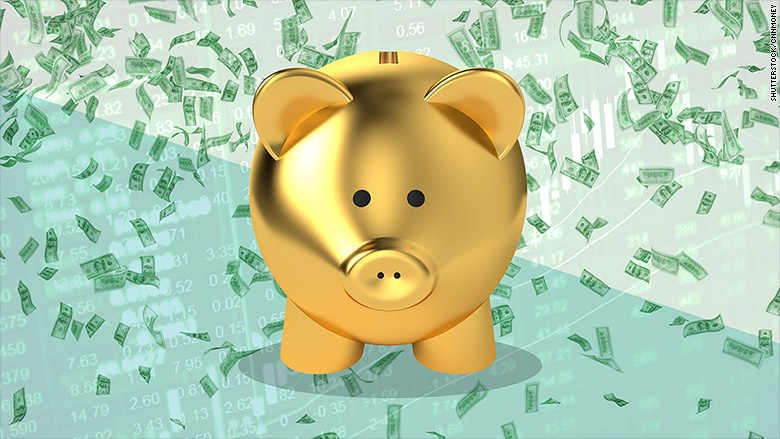:max_bytes(150000):strip_icc():format(jpeg)/corporate_debt-5bfc37cac9e77c0026b840a4.jpg)
You have to look at many different financial records to see if it’s a worthwhile risk when you’re considering investing in a company. What does it mean to you if you invest in a company after doing all your research and then it decides to borrow money?
You can evaluate whether the debt will affect your investment in a few ways.
Key Takeaways
- A company acquires debt when it issues securities.
- A company also acquires debt when it takes out loans from banks and other lending institutions.
- Look into how much debt the company has overall to determine the impact on an investment.
- Try to determine why the debt has been incurred.
- Compare the total to other company debt levels in the same industry.
How Does Corporate Debt Work?
A company can take on different types of debt. It can borrow money by two main methods:
Fixed-Income Securities
Debt securities issued by the company are purchased by investors. You’re effectively lending money to a business or government when you buy any type of fixed-income security. The company must pay underwriting fees when issuing these securities but debt securities allow the company to raise more money and to borrow for longer durations than loans typically allow.
Loans
Borrowing from a private entity means going to a bank for a loan or a line of credit. Companies will commonly have open lines of credit from which they can draw to meet their cash requirements for day-to-day activities. The loan a company borrows from an institution can be used to pay the company payrolls, buy inventory and new equipment, or keep it as a safety net. Loans typically require repayment in a shorter period than most fixed-income securities.
What to Look For
An investor should consider a few things when deciding whether to continue their investment in a company that’s taking on new debt.
How Much Debt Does the Company Currently Have?
Taking on some debt if a company has absolutely no debt may be beneficial because it can give it more opportunity to reinvest resources into its operations. You might want to think twice, however, if the company in question already has a substantial amount of debt,
Too much debt is generally a bad thing for companies and shareholders because it inhibits a company’s ability to create a cash surplus.
High debt levels can also negatively affect common stockholders who are last in line for claiming payback from a company that becomes insolvent.
What Kind of Debt Is the Company Taking On?
Loans and fixed-income securities that a company issues differ dramatically in their maturity dates. Some loans must be repaid within a few days of issue but others don’t have to be paid for several years. Debt securities issued to public investors will typically have longer maturities than the loans offered by private institutions and banks.
Large short-term loans may be harder for companies to repay but long-term fixed-income securities with high interest rates might not be easier on the company. Try to determine if the length and interest rate of the debt is suitable for financing the project that the company wants to undertake.
What Is the Debt For?
Is the debt meant to repay or refinance old debts or is it for new projects that have the potential to increase revenues?
You should typically think twice before purchasing stock in companies that have repeatedly refinanced their existing debt. This indicates an inability to meet financial obligations. A company that must consistently refinance may be doing so because it’s spending more than it’s making. Its expenses are exceeding its revenues. This is bad for investors.
One thing to note, however, is that it’s a good idea for companies to refinance their debt to lower their interest rates. This type of refinancing aims to reduce the debt burden but it shouldn’t affect the debt load and isn’t considered to be new debt.
Can the Company Afford the Debt?
Most companies will be sure of their ideas before committing money to them but not all companies succeed in making their ideas work. It’s important to determine whether the company can still make its payments if it gets into trouble or if its projects fail. Look into whether the company’s cash flows are sufficient to meet its debt obligations and make sure the company has diversified its prospects.
What Special Provisions May Force Immediate Payback?
Look to see whether any of its loan provisions might be detrimental to the company if the provision is enacted. Some banks require minimum financial ratio levels so the bank has the right to call or demand repayment of the loan if any of the company’s stated ratios drop below a predetermined level. Being forced to repay the loan unexpectedly can magnify any problem within the company and sometimes even force it into liquidation.
How Does the Company’s New Debt Compare to Its Industry?
Many different fundamental analysis ratios can help you along. These ratios are a good way to compare companies within the same industry:
- Quick Ratio (Acid Test): This tells investors approximately how capable the company is of paying off all its short-term debt without having to sell any inventory.
- Current Ratio: This ratio indicates the amount of a company’s short-term assets versus its short-term liabilities. The greater the short-term assets compared to liabilities, the better off the company is in paying off its short-term debts.
- Debt-To-Equity Ratio: This measures a company’s financial leverage that’s calculated by dividing long-term debt by shareholders’ equity. It indicates what proportions of equity and debt the company is using to finance its assets.
What Are Equity Securities?
Common stock is an equity security. Each share awards partial ownership in the company when it’s sold to an investor. The percentage of ownership depends on the percentage of total shares issued.
What’s the Difference Between Common and Preferred Stock?
Common stock provides an investor with ownership rights. A share typically represents one vote on important issues affecting the company. The shares may increase in value as the company earns a profit.
Preferred stock generally may not provide voting rights but it often pays dividends that are more significant than the returns provided by common stock shares. Price per share doesn’t generally increase, however. Preferred shareholders are generally first in line for payout if the company fails and liquidates, ahead of common shareholders.
How Can I Look Into a Company’s Cash Flows?
The information you need will be available on the company’s cash flow statements. They’re typically issued for each accounting period and they segregate cash flow into operating, investing, and financing activities. These statements are available in the company’s Form 10-K and Form 10-Q filings.
The Bottom Line
A company that’s increasing its debt load should have a plan for repaying it. Try to ensure that the company knows how the debt affects investors, how the debt will be repaid, and how long it will take to do so when you have to evaluate a company’s debt.



